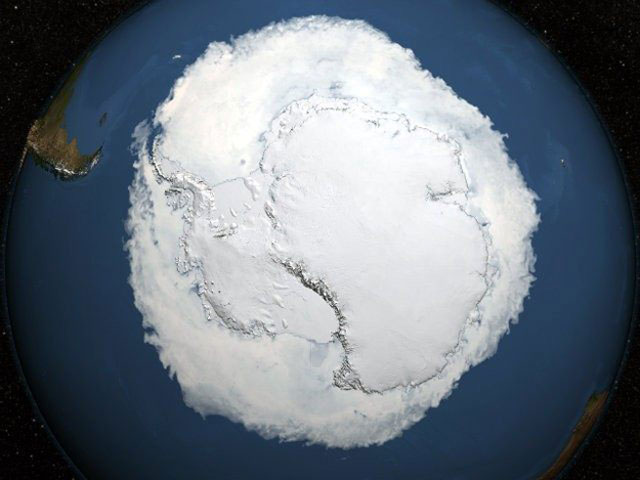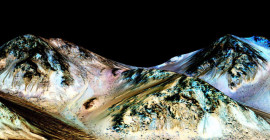
The Antarctic ice sheet is thickening enough to currently outweigh the losses of ice occurring due to global warming, a new NASA study has revealed.
The study reveals that the increase in Antarctic snow accrual that began 10,000 years ago is “currently adding enough ice to the continent to outweigh the increased losses from its thinning glaciers.”
NASA finds enormous hole on the sun
The Antarctic ice sheet exhibited a net gain of 112 billion tonnes of ice a year from 1992 to 2001 which slowed to 82 billion tonnes of ice per year between 2003 and 2008, according to new analysis of satellite data.
“We’re essentially in agreement with other studies that show an increase in ice discharge in the Antarctic Peninsula and the Thwaites and Pine Island region of West Antarctica,” said Jay Zwally, lead author of the study, a glaciologist with NASA Goddard Space Flight Center in Greenbelt.
 PHOTO: NASA
PHOTO: NASA“Our main disagreement is for East Antarctica and the interior of West Antarctica – there, we see an ice gain that exceeds the losses in the other areas.” Zwally added that his team “measured small height changes over large areas, as well as the large changes observed over smaller areas.”
But it might only take a few decades for Antarctica’s growth to reverse, according to Zwally. “If the losses of the Antarctic Peninsula and parts of West Antarctica continue to increase at the same rate they’ve been increasing for the last two decades, the losses will catch up with the long-term gain in East Antarctica in 20 or 30 years -- I don’t think there will be enough snowfall increase to offset these losses.”
Evidence of flowing liquid water on Mars: NASA
To calculate how much the ice sheet is growing or shrinking by examining the changes in surface height that are measured by the satellite altimeters.
Surface height changes in location of the accumulation of snowfall on an ice sheet is not equal to the ice flow downward, causing the ice-sheet mass to grow or shrink.
Calculations made by Zwally’s team reveal that the mass gain from the thickening of East Antarctica remained steady from 1992 to 2008 at 200 billion tonnes per year, while the ice losses from the coastal regions of West Antarctica and the Antarctic Peninsula increased by 65 billion tonnes per year.
“The good news is that Antarctica is not currently contributing to sea level rise, but is taking 0.23 millimeters per year away,” Zwally said. “But this is also bad news. If the 0.27 millimeters per year of sea level rise attributed to Antarctica in the IPCC report is not really coming from Antarctica, there must be some other contribution to sea level rise that is not accounted for.”




































1713509570-0/Taylor-Swift-Album-Release-(1)1713509570-0-270x192.webp)





















COMMENTS (3)
Comments are moderated and generally will be posted if they are on-topic and not abusive.
For more information, please see our Comments FAQ